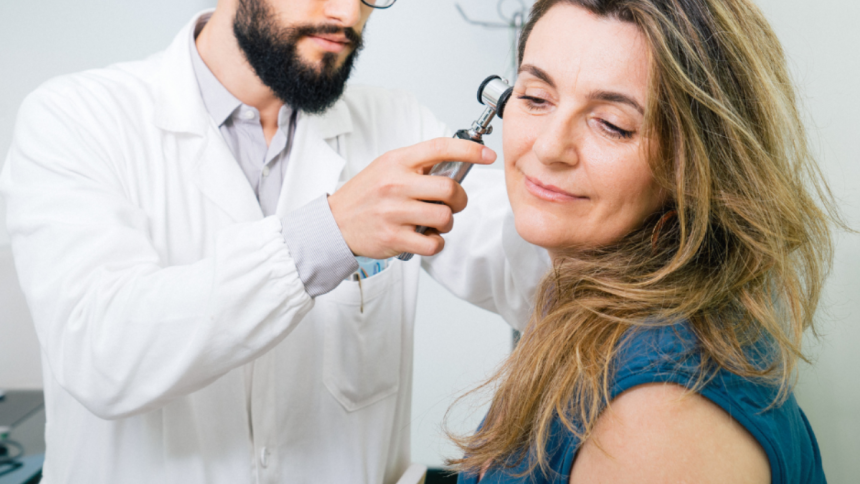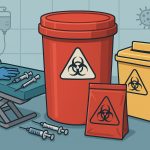If you’re experiencing ear discomfort, muffled hearing, or that annoying feeling of blockage, it might be time to have your earwax professionally removed. But if you’ve never been to a specialist for this before, you might be wondering what actually happens during an earwax removal appointment. Knowing what to expect can help ease any nerves and ensure you’re prepared. Here’s a step-by-step guide to what typically happens during a professional earwax removal visit.
Booking Your Appointment
Most clinics or hearing centres will ask about your symptoms when you book, either over the phone or online. This helps the specialist understand your situation before you arrive. They might ask if you have any pain, hearing loss, dizziness, or previous ear issues to prioritise your care appropriately. Here’s when to seek expert ear care.
Initial Consultation and Examination
When you arrive, the specialist will start by asking about your ear health and any symptoms you’re experiencing. Next, they’ll take a close look inside your ears using a specialised tool called an otoscope — a small flashlight device with a magnifier — to check for wax buildup, infections, or any other issues. This examination helps them decide on the best removal method.
Choosing the Right Removal Method
There are a few different professional techniques to remove earwax safely. The most common are:
- Microsuction: A gentle vacuum removes the wax under direct visual guidance. It’s quick, precise, and doesn’t involve water.
- Irrigation: Also known as ear syringing, this involves flushing the ear canal with warm water or saline to wash out the wax.
- Manual removal: Using small specialised tools, the specialist carefully extracts wax by hand.
Your specialist will explain which method they recommend based on your ear condition and personal comfort.
The Earwax Removal Procedure
Once the method is chosen, the actual removal begins. If it’s microsuction, you’ll feel a slight suction but no pain. Irrigation might feel like a gentle wash inside your ear, and manual removal can involve light scraping, but all are performed carefully to avoid discomfort.
The whole procedure usually takes around 10 to 30 minutes, depending on the amount of wax and the method used. Most people find it surprisingly comfortable and feel immediate relief once the blockage is cleared.
Aftercare Advice
After your earwax is removed, the specialist will clean up and examine your ears again to ensure everything looks healthy. They’ll likely give you advice on how to keep your ears clean and when to come back for a check-up. If any irritation or infection is spotted, they might suggest treatment or refer you to a doctor.
When to Seek Further Help
If you experience pain, dizziness, discharge, or persistent hearing loss after the appointment, contact your specialist or GP. Although rare, complications can happen and should be addressed promptly.
What Will Happen If You Leave Excessive Earwax?
Are you not convinced that excessive earwax is a big problem? Most people know that earwax serves a purpose and it’s natural. However, when you have too much, this is when problems occur. There can be several reasons why you’re hesitating to get this removed. Perhaps you don’t think it’s a big deal and it’s not causing you a lot of issues. Alternatively, you might be worried about the appointment and whether it’s going to be uncomfortable. No matter what the reason is, know that leaving excessive earwax isn’t a good idea. Let’s take a closer look at why.
You Are in Pain
If you don’t have many symptoms from excessive earwax, you’re lucky. Most people will experience discomfort as it becomes compacted and they can’t get rid of it. Thus, if you simply leave the matter, it’s going to get worse. This is when the pain can start, which can be very unpleasant in your ear. This can impact your quality of life, interfering with everything from socialising and exercising to working.
Causes Hearing Loss
When you have too much earwax, it’s going to cause a blockage. When this happens, it can mean that you experience hearing loss. This is going to impact how you interact with others on a daily basis. It can also be frustrating when you can’t understand what’s going on.
Experience Dizziness
You can start to feel dizzy when you’ve got too much earwax. Indeed, this can impact things like mood and balance, not allowing you to enjoy the same activities that you used to. Most people feel like their dizziness goes away when they have the earwax removed.
Conclusion
A professional earwax removal appointment is straightforward, safe, and designed with your comfort in mind. By trusting a specialist, you’re not only getting rid of troublesome wax but also making sure your ears stay healthy and well cared for. If you’re dealing with ear discomfort or hearing issues, booking an appointment could be the easiest step to clear, comfortable hearing.
Lynn Martelli is an editor at Readability. She received her MFA in Creative Writing from Antioch University and has worked as an editor for over 10 years. Lynn has edited a wide variety of books, including fiction, non-fiction, memoirs, and more. In her free time, Lynn enjoys reading, writing, and spending time with her family and friends.















